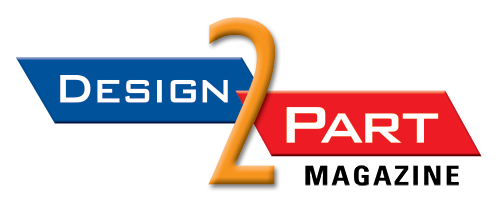Electronics companies are leveraging new technologies to enhance production, boost quality, and improve the functionality of their products.
By Mark Shortt
Electronics manufacturing service (EMS) providers today are employing technologies ranging from collaborative robots for custom potting of printed circuit board (PCB) assemblies, to advanced materials that bring greater functionality to components like stretchable sensors and interconnects. Sophisticated quality control tools are also gaining traction, including AI-powered visual inspection software designed to prevent manufacturers from assembling defective or unauthorized components onto a circuit board.
Bringing further possibilities to the electronics industry are electrically conductive polymers. These advanced materials are “transforming the landscape of modern electronics by merging traditional polymer properties with conductive capabilities,” according to a report by market research firm Valuates Reports.
Not surprisingly, conductive polymers are playing a key role in the development of flexible and deformable electronics—lightweight, stretchable, and bendable materials capable of conforming to surfaces with complex geometries.
“Their inherent flexibility and adaptability make them ideal for integration into various electronic assemblies, including circuit boards, housings, and wearable devices,” Valuates Reports stated in a press release. “With increasing regulatory standards and rising demand for high-performance electronics, the utilization of conductive polymers for ESD and EMI protection has become a strategic choice for manufacturers.”
Liquid Wire, a developer of deformable electronics, describes its deformable printed circuits as “a new class of circuitry” that can “stretch, twist, and flex in multiple directions while maintaining full electrical performance for many millions of cycles,” according to the company’s website. By integrating smoothly with soft and rigid components, Liquid Wire’s deformable electronics are reported to reduce failure points, simplify assembly, and ensure long-term performance in advanced robotic systems.
“Robotic hands present unique engineering challenges, and we believe our deformable electronics can provide new possibilities for integrating sensing and connectivity in ways that enhance both performance and design flexibility,” said Robert Gunn, president of Liquid Wire, in a company release.
More and more EMS providers are offering a turnkey service for custom electronics and assemblies, separating themselves from suppliers that limit their services to a particular specialty. They may provide electronic design in addition to circuit board assembly, box build, and complex products that require electronic, mechanical, and electromechanical assembly. They might also offer engineering support from prototyping to new product introduction (NPI), all the way through full production and testing.
Advanced assembly technologies
Electronics are now essential components of products and equipment too numerous to mention. What many of these industries have in common are demands for “higher performance, greater miniaturization, and enhanced reliability,” according to a report released in June by the marketing research firm Meticulous Research®. Fortunately for OEMs and product makers, the complex requirements of modern electronic designs are being met by state-of-the-art manufacturing capabilities of printed circuit board assembly (PCBA) manufacturers.
In its report, Meticulous Research® described the printed circuit board assembly market as “a critical foundation of the global electronics ecosystem, enabling the functionality of virtually every electronic device from smartphones to automotive systems.” It stated that leading companies are investing heavily to establish production capabilities that can deliver high-density interconnect assemblies with superior quality and cost-effectiveness. Their investments in automated assembly equipment and precision manufacturing technologies are reportedly making “advanced PCBA solutions increasingly accessible across diverse industry verticals, while delivering enhanced performance and reliability benefits.”
According to the report, the surface mount technology (SMT) segment is capturing approximately 75 percent of the total PCBA market due to its superior component density, automated assembly compatibility, and cost-effectiveness for high-volume production. But the segment known as mixed technology is said to be recording the fastest growth, driven by the “increasing complexity of electronic designs requiring both SMT and through-hole components.”
Industry trends fueling global demand for PCBs
Demand for printed circuit boards (PCBs) is rising across the globe as the use of consumer electronics, IoT devices, and emerging technologies continues to grow. That’s according to a report by BCC Research, “Printed Circuit Boards: Technologies and Global Markets,” which details current trends in the global PCB market using data from 2023 and forecasts from 2024 to 2029.
The report estimates the PCB market will grow from $70.9 billion in 2024 to $92.4 billion by the end of 2029—an increase of $21.5 billion at a compound annual growth rate of 5.4 percent. It also sheds light on market drivers, new technologies, and competing market forces, according to a release from BCC Research summarizing the findings of its report.
“Multilayer and high-density interconnection (HDI) are the most popular types of PCBs,” the company said in the release. “They offer more design flexibility and higher circuit density, making them suitable for complex and compact electronics. They also provide better signal integrity, which is essential for high-speed communication in computer motherboards, smartphones, medical devices, and aerospace electronics.”
One of the key factors in PCB market growth is the soaring demand for consumer electronics and IoT devices. It’s reflected in the increased purchases of gadgets such as smartphones, smartwatches, and smart home products, which play a significant role in modern lifestyles, homes, and workplaces. Other dynamics include the growing use of autonomous vehicles (AVs) and electric vehicles (EVs), and the rising adoption of 5G technology, the release stated.
